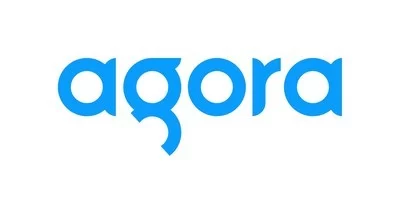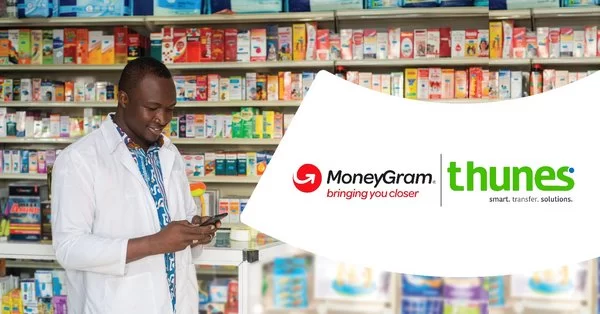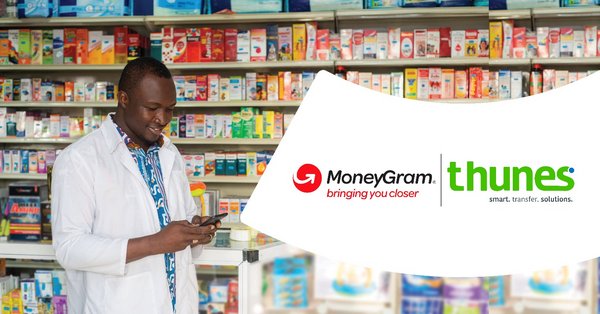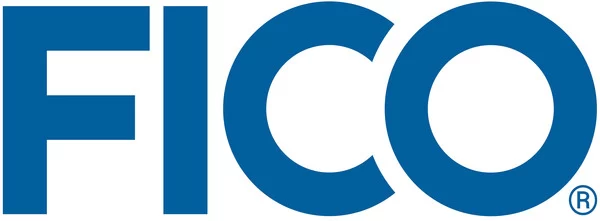SHANGHAI, Aug. 27, 2020 — LAIX Inc. ("LAIX" or the "Company") (NYSE: LAIX), an artificial intelligence (AI) company in China that creates and delivers products and services to popularize English learning, today announced its unaudited financial results for the second quarter ended June 30, 2020.
Second Quarter 2020 Financial and Operating Highlights
- Gross billings[1] for the second quarter of 2020 were RMB306.2 million (US$43.3 million), a 13.2% decrease from RMB352.7 million for the previous quarter and a 5.5% increase from RMB290.1 million for the same quarter last year.
- Net revenues for the second quarter of 2020 were RMB269.4 million (US$38.1 million), an 18.0% increase from RMB228.3 million for the previous quarter and a 2.5% decrease from RMB276.4 million for the same quarter last year.
- Gross margin for the second quarter of 2020 was 71.9%, compared with 65.5% for the previous quarter and 76.5% for the same quarter last year.
- Sales and marketing expenses for the second quarter of 2020 were RMB200.7 million (US$28.4 million), a 24.2% decrease from RMB264.7 million for the previous quarter and an 8.7% decrease from RMB219.7 million for the same quarter last year.
- Net loss for the second quarter of 2020 was RMB92.5 million (US$13.1 million), compared with RMB197.0 million for the previous quarter and RMB87.8 million for the same quarter last year.
- Operating cash outflow for the second quarter of 2020 was RMB66.4 million (US$9.4 million), compared with RMB99.8 million for the previous quarter and RMB58.9 million for the same quarter last year.
- Approximately 0.5 million paying users purchased the Company’s courses and services for the second quarter of 2020, compared with approximately 0.9 million paying users for the previous quarter and approximately 0.9 million paying users for the same quarter last year.
- Total cumulative registered users were 185.6 million as of June 30, 2020, compared with 179.7 million total cumulative registered users as of March 31, 2020 and 138.8 million total cumulative registered users as of June 30, 2019.
|
[1] "Gross billings" for a certain period refer to the total amount of cash received from the sale of course packages in that period net of the total amount of cash refunds paid to users in the same period. |
Management Comments
Dr. Yi Wang, Chairman and Chief Executive Officer of LAIX, commented, "We are pleased to see the net revenues for the second quarter of 2020 reach RMB269.4 million, an 18.0% increase from the previous quarter and exceeding the high end of our guidance range. Gross profit margin bounced back above 70%, and sales and marketing expenses as a percentage of net revenues declined to 74.5%, compared to 115.9% in the previous quarter. Consequently, net loss narrowed to RMB92.5 million, down 53.0% sequentially. Operating cash outflow also declined to RMB66.4 million in the second quarter of 2020, compared with RMB99.8 million in the first quarter of 2020. While the total number of unique paying users decreased sequentially as a result of both the fade-away of the unexpected increase in traffic due to the COVID-19 outburst in the first quarter as well as our stringent cost control in advertising and optimization of user acquisition costs, our gross billings per paying user improved by 50.6% quarter-over-quarter, demonstrating our success in migrating users into targeted courses with higher average selling prices. We believe there is room for further improvement in these metrics in the coming quarters.
"Our improving financial performance reflects our focus and priority on efficiently allocating resources, restructuring the product mix and streamlining our operations. Streamlining our operations involves optimizing the organizational structure, refining marketing channels and enhancing free learning content, in order to drive our company towards profitable growth in the long term. Looking ahead, we will continue to focus on product innovation and further refinement of our internal operations, together as our efforts to achieve a healthy and sustainable growth in the long term." concluded Dr. Wang.
Second Quarter 2020 Financial Results
Net Revenues
Net revenues for the second quarter of 2020 were RMB269.4 million (US$38.1 million), an 18.0% increase from RMB228.3 million for the previous quarter and a 2.5% decrease from RMB276.4 million for the same quarter last year. The quarter-over-quarter increase was primarily attributable to the upgrade of product mix, introducing additional courses and services with higher average selling prices.
Cost of Revenues
Cost of revenues for the second quarter of 2020 was RMB75.6 million (US$10.7 million), a 4.0% decrease from RMB78.8 million for the previous quarter and a 16.6% increase from RMB64.9 million for the same quarter last year. The quarter-over-quarter change was primarily due to decreases in salaries and benefit expenses.
Gross Profit and Gross Margin
Gross profit for the second quarter of 2020 was RMB193.8 million (US$27.4 million), a 29.6% increase from RMB149.5 million for the previous quarter and an 8.4% decrease from RMB211.6 million for the same quarter last year.
Gross margin for the second quarter of 2020 was 71.9%, compared with 65.5% for the previous quarter and 76.5% for the same quarter last year.
Operating Expenses
Total operating expenses for the second quarter of 2020 were RMB289.7 million (US$41.0 million), a 16.3% decrease from RMB346.1 million for the previous quarter and a 3.6% decrease from RMB300.5 million for the same quarter last year. The changes were primarily due to an improvement in operating efficiency and the optimization of the organizational structure.
Sales and marketing expenses for the second quarter of 2020 were RMB200.7 million (US$28.4 million), a 24.2% decrease from RMB264.7 million for the previous quarter and an 8.7% decrease from RMB219.7 million for the same quarter last year. The changes were primarily due to the Company’s stringent cost control in advertising and optimization of user acquisition costs. Sales and marketing expenses as a percentage of net revenues decreased to 74.5% for the second quarter of 2020, compared with 115.9% for the previous quarter and 79.5% for the same quarter last year.
Research and development expenses for the second quarter of 2020 were RMB48.5 million (US$6.9 million), an 18.1% decrease from RMB59.2 million for the previous quarter and an 8.3% decrease from RMB52.9 million for the same quarter last year. Research and development expenses as a percentage of net revenues decreased from the same quarter last year, representing 18.0% of net revenues for the second quarter of 2020, compared with 25.9% for the previous quarter and 19.1% for the same quarter last year. The changes were primarily due to the efficiency optimization in personnel management.
General and administrative expenses for the second quarter of 2020 were RMB40.5 million (US$5.7 million), an 82.8% increase from RMB22.1 million for the previous quarter and a 45.0% increase from RMB27.9 million for the same quarter last year, primarily due to a one-off impairment loss on leasehold improvement caused by early termination of lease in Wuhan due to changes in business strategy. Subsequently in August, the early termination of lease was confirmed with the lessor. General and administrative expenses were 15.0% of net revenues for the second quarter of 2020, compared with 9.7% for the previous quarter and 10.1% for the same quarter last year.
Loss from Operations
Loss from operations for the second quarter of 2020 was RMB95.9 million (US$13.6 million), compared with RMB196.5 million for the previous quarter and RMB88.9 million for the same quarter last year. The improvement in operating result was attributable to: (i) the upgrade of product mix, introducing additional courses and services with higher average selling prices; (ii) an improvement in operating efficiency; and (iii) stringent cost control in advertising and optimization of user acquisition costs.
Adjusted EBITDA[2]
Adjusted EBITDA for the second quarter of 2020 was a loss of RMB77.8 million (US$11.0 million), compared with an adjusted EBITDA loss of RMB182.5 million for the previous quarter and an adjusted EBITDA loss of RMB77.2 million for the same quarter last year.
|
[2] "Adjusted EBITDA" is a non-GAAP measure, which represents EBITDA before share-based compensation expenses. EBITDA represents net loss before interest, tax, depreciation and amortization. See "Reconciliations of GAAP and Non-GAAP Results" at the end of this press release. |
Foreign exchange related (losses) / gains, net
Foreign exchange gain was RMB0.1 million (US$20 thousand) in the second quarter of 2020, compared with a foreign exchange loss of RMB2.3 million for the previous quarter and a foreign exchange loss of RMB1.7 million for the same quarter last year.
Net Loss
Net loss for the second quarter of 2020 was RMB92.5 million (US$13.1 million), compared with RMB197.0 million for the previous quarter and RMB87.8 million for the same quarter last year.
Adjusted net loss[3] for the second quarter of 2020 was RMB85.3 million (US$12.1 million), compared with RMB189.2 million for the previous quarter and RMB81.6 million for the same quarter last year.
Basic and diluted net loss per ordinary share attributable to ordinary shareholders for the second quarter of 2020 was RMB1.87 (US$0.27), compared with RMB3.99 for the previous quarter and RMB1.78 for the same quarter last year.
|
[3] "Adjusted net loss" is a non-GAAP measure, which excludes share-based compensation expenses. See "Reconciliation of GAAP and Non-GAAP Results" at the end of this press release. |
Balance Sheet & Cashflows
As of June 30, 2020, the Company’s cash, cash equivalents, restricted cash and short-term investments totaled RMB390.3 million (US$55.3 million), compared with RMB459.4 million as of March 31, 2020 and RMB552.6 million as of December 31, 2019.
Operating cash outflow for the second quarter of 2020 was RMB66.4 million (US$9.4 million), compared with RMB99.8 million for the previous quarter and RMB58.9 million for the same quarter last year.
The Company had deferred revenues of RMB828.8 million (US$117.3 million) as of June 30, 2020, compared with RMB820.7 million as of March 31, 2020 and RMB696.0 million as of December 31, 2019.
Impact of the Recently Adopted Major Accounting Pronouncement
In June 2016, the FASB issued ASU 2016-13 "Financial Instruments-Credit Losses (Topic 326)," which requires entities to measure all expected credit losses for financial assets held at the reporting date based on historical experience, current conditions, and reasonable and supportable forecasts. This replaces the existing incurred loss model and is applicable to the measurement of credit losses on financial assets measured at amortized cost. The Company adopted the new standard effective January 1, 2020 on a modified retrospective basis and did not restate comparative periods. The impact of new standard was immaterial to the Company.
Outlook
For the third quarter of 2020, the Company currently expects:
– Net revenues to be between RMB230.0 million to RMB250.0 million, which would represent a decrease of approximately 12.2% to 4.6% from RMB262.1 million for the same quarter last year;
This forecast reflects the Company’s current and preliminary view on the current business situation and market conditions, which is subject to change.
Conference Call
The Company’s management will host an earnings conference call at 9:00 PM U.S. Eastern Time on August 26, 2020 (9:00 AM Beijing/Hong Kong time on August 27, 2020).
Dial-in details for the earnings conference call are as follows:
|
United States (toll free): |
+1-877-396-2308 |
|
International: |
+1-647-689-5527 |
|
Mainland China: |
400-048-6136 or 400-043-3098 |
|
Hong Kong: |
+852-5803-0358 |
|
Conference ID: |
2666857 |
Participants should dial-in at least 10 minutes before the scheduled start time to be connected to the call.
Additionally, a live and archived webcast of the conference call will be available on the Company’s investor relations website at http://ir.laix.com/investors.
About LAIX Inc.
LAIX Inc. ("LAIX" or the "Company") is an artificial intelligence (AI) company in China that creates and delivers products and services to popularize English learning. Its proprietary AI teacher utilizes cutting-edge deep learning and adaptive learning technologies, big data, well-established education pedagogies and the mobile internet. LAIX believes its innovative approach fundamentally transforms learning. LAIX provides its products and services on demand via its mobile apps, primarily its flagship "English Liulishuo" mobile app launched in 2013. On the Company’s platform, AI technologies are seamlessly integrated with diverse learning content incorporating well-established language learning pedagogies, gamified features and strong social elements to deliver an engaging, adaptive learning experience. LAIX provides a variety of courses inspired by a broad range of topics and culture themes to make English learning more interesting and is committed to offering a fun, interactive learning environment to motivate and engage its users.
For more information, please visit: http://ir.laix.com.
Use of Non-GAAP Financial Measures
We use adjusted EBITDA and adjusted net loss, each a non-GAAP financial measure, in evaluating our operating results and for financial and operational decision-making purposes.
We believe that adjusted EBITDA and adjusted net loss help identify underlying trends in our business that could otherwise be distorted by the effect of certain expenses that we include in loss from operations and net loss. We believe that adjusted EBITDA and adjusted net loss provide useful information about our results of operations, enhance the overall understanding of our past performance and future prospects and allow for greater visibility with respect to key metrics used by our management in its financial and operational decision-making.
Adjusted EBITDA and adjusted net loss should not be considered in isolation or construed as an alternative to loss from operations, net loss or any other measure of performance or as an indicator of our operating performance. Investors are encouraged to review the historical non-GAAP financial measures to the most directly comparable GAAP measures. Adjusted EBITDA and adjusted net loss presented here may not be comparable to similarly titled measures presented by other companies. Other companies may calculate similarly titled measures differently, limiting their usefulness as comparative measures to our data. We encourage investors and others to review our financial information in its entirety and not rely on a single financial measure.
Exchange Rate Information
This announcement contains translations of certain RMB amounts into U.S. dollars at a specified rate solely for the convenience of the reader. Unless otherwise noted, all translations from Renminbi to U.S. dollars are made at a rate of RMB7.0651 to US$1.00, the rate in effect as of June 30, 2020 published by the Federal Reserve Board.
Safe Harbor Statement
This announcement contains forward-looking statements. These statements are made under the "safe harbor" provisions of the U.S. Private Securities Litigation Reform Act of 1995. These forward-looking statements can be identified by terminology such as "will," "expects," "anticipates," "aims," "future," "intends," "plans," "believes," "estimates," "confident," "potential," "continue" or other similar expressions. Among other things, the Outlook and quotations from management in this announcement, as well as LAIX’s strategic and operational plans, contain forward-looking statements. LAIX may also make written or oral forward-looking statements in its periodic reports to the U.S. Securities and Exchange Commission, in its annual report to shareholders, in press releases and other written materials and in oral statements made by its officers, directors or employees to third parties. Statements that are not historical facts, including but not limited to statements about LAIX’s beliefs and expectations, are forward-looking statements. Forward-looking statements involve inherent risks and uncertainties, and a variety of factors could cause actual results to differ materially from those contained in any forward-looking statement, including but not limited to the following: LAIX’s goals and strategies; LAIX’s future business development, results of operations and financial condition; the expected growth of the education market; LAIX’s ability to monetize the user base; fluctuations in general economic and business conditions in China; the potential impact of the COVID-19 to LAIX’s business operations and the economy in China and elsewhere generally; and assumptions underlying or related to any of the foregoing. Further information regarding these and other risks is included in the Company’s filings with the Securities and Exchange Commission. All information provided in this press release and in the attachments is as of the date of the press release, and the Company undertakes no duty to update such information, except as required under applicable law.
For investor and media inquiries, please contact:
LAIX Inc.
Harry He
Investor Relations
Email: ir@laix.com
The Piacente Group Investor Relations
Brandi Piacente
Tel: +1-212-481-2050
Email: liulishuo@tpg-ir.com
Emilie Wu
Tel: +86-21-6039-8363
Email: liulishuo@tpg-ir.com
|
LAIX INC. |
||||||
|
UNAUDITED CONSOLIDATED BALANCE SHEETS |
||||||
|
(Amount in thousands of Renminbi ("RMB") and US dollars ("US$")) |
||||||
|
As of |
As of |
|||||
|
December 31, 2019 |
June 30, 2020 |
|||||
|
RMB |
RMB |
US$ |
||||
|
ASSETS |
||||||
|
Current assets: |
||||||
|
Cash and cash equivalents |
281,166 |
169,248 |
23,955 |
|||
|
Restricted cash |
1,816 |
2,147 |
304 |
|||
|
Short-term investments |
269,643 |
218,953 |
30,991 |
|||
|
Accounts receivable, net |
7,360 |
8,509 |
1,204 |
|||
|
Prepayments and other current assets |
86,787 |
81,449 |
11,528 |
|||
|
Total current assets |
646,772 |
480,306 |
67,982 |
|||
|
Non-current assets: |
||||||
|
Property and equipment, net |
71,637 |
45,670 |
6,464 |
|||
|
Investment in equity fund |
5,919 |
6,196 |
877 |
|||
|
Intangible assets, net |
15,541 |
15,776 |
2,233 |
|||
|
Operating lease right-of-use assets, net |
155,525 |
111,929 |
15,843 |
|||
|
Other non-current assets |
8,447 |
7,253 |
1,027 |
|||
|
Deferred tax assets |
15,336 |
15,336 |
2,171 |
|||
|
Total non-current assets |
272,405 |
202,160 |
28,615 |
|||
|
Total assets |
919,177 |
682,466 |
96,597 |
|||
|
LIABILITIES |
||||||
|
Current liabilities: |
||||||
|
Accounts payable |
137,684 |
102,208 |
14,467 |
|||
|
Deferred revenue |
695,971 |
828,763 |
117,304 |
|||
|
Salary and welfare payable |
153,969 |
130,490 |
18,470 |
|||
|
Tax payable |
74,340 |
75,080 |
10,627 |
|||
|
Operating lease liability, current |
37,009 |
34,973 |
4,950 |
|||
|
Accrued liabilities and other current liabilities |
15,444 |
16,448 |
2,327 |
|||
|
Total current liabilities |
1,114,417 |
1,187,962 |
168,145 |
|||
|
Non-current liabilities: |
||||||
|
Operating lease liability, non-current |
117,124 |
77,868 |
11,022 |
|||
|
Other non-current liabilities |
12,441 |
12,839 |
1,817 |
|||
|
Total non-current liabilities |
129,565 |
90,707 |
12,839 |
|||
|
Total liabilities |
1,243,982 |
1,278,669 |
180,984 |
|||
|
Shareholders’ equity/(deficit) |
||||||
|
Class A Ordinary shares |
208 |
210 |
30 |
|||
|
Class B Ordinary shares |
121 |
121 |
17 |
|||
|
Subscriptions receivable from founding shareholders |
(122) |
(122) |
(17) |
|||
|
Treasury Stock |
(10,730) |
(15,327) |
(2,169) |
|||
|
Additional paid-in capital |
1,167,884 |
1,184,200 |
167,613 |
|||
|
Accumulated other comprehensive income |
29,483 |
35,874 |
5,077 |
|||
|
Accumulated (deficit) |
(1,511,649) |
(1,801,159) |
(254,938) |
|||
|
Total shareholders’ equity/(deficit) |
(324,805) |
(596,203) |
(84,387) |
|||
|
Total liabilities and shareholders’ equity/(deficit) |
919,177 |
682,466 |
96,597 |
|||
|
LAIX INC. |
||||||||||||||
|
UNAUDITED CONSOLIDATED STATEMENTS OF COMPREHENSIVE LOSS |
||||||||||||||
|
(Amount in thousands of Renminbi ("RMB") and US dollars ("US$") |
||||||||||||||
|
except for number of shares and per share data) |
||||||||||||||
|
Three months ended |
Six months ended |
|||||||||||||
|
June 30 |
March 31 |
June 30 |
June 30 |
June 30 |
||||||||||
|
2019 |
2020 |
2020 |
2019 |
2020 |
||||||||||
|
RMB |
RMB |
RMB |
US$ |
RMB |
RMB |
US$ |
||||||||
|
Net revenues |
276,427 |
228,338 |
269,405 |
38,132 |
529,731 |
497,743 |
70,451 |
|||||||
|
Cost of revenues |
(64,865) |
(78,799) |
(75,646) |
(10,707) |
(124,555) |
(154,445) |
(21,860) |
|||||||
|
Gross profit |
211,562 |
149,539 |
193,759 |
27,425 |
405,176 |
343,298 |
48,591 |
|||||||
|
Operating expenses: |
||||||||||||||
|
Sales and marketing expenses |
(219,734) |
(264,740) |
(200,726) |
(28,411) |
(413,362) |
(465,466) |
(65,882) |
|||||||
|
Research and development expenses |
(52,882) |
(59,219) |
(48,482) |
(6,862) |
(102,961) |
(107,701) |
(15,244) |
|||||||
|
General and administrative expenses |
(27,895) |
(22,139) |
(40,461) |
(5,727) |
(47,942) |
(62,600) |
(8,860) |
|||||||
|
Total operating expenses |
(300,511) |
(346,098) |
(289,669) |
(41,000) |
(564,265) |
(635,767) |
(89,986) |
|||||||
|
Other operating income |
– |
18 |
25 |
4 |
– |
43 |
6 |
|||||||
|
Loss from Operations |
(88,949) |
(196,541) |
(95,885) |
(13,571) |
(159,089) |
(292,426) |
(41,389) |
|||||||
|
Other income/(expenses): |
||||||||||||||
|
Interest income |
761 |
683 |
366 |
52 |
1,062 |
1,049 |
148 |
|||||||
|
Foreign exchange related (losses)/gains, net |
(1,711) |
(2,319) |
140 |
20 |
(1,012) |
(2,179) |
(308) |
|||||||
|
Change in fair value of short-term investment |
1,815 |
517 |
806 |
114 |
3,938 |
1,323 |
187 |
|||||||
|
Other income, net |
269 |
682 |
2,098 |
297 |
42 |
2,780 |
393 |
|||||||
|
Loss before income taxes expenses |
(87,815) |
(196,978) |
(92,475) |
(13,088) |
(155,059) |
(289,453) |
(40,969) |
|||||||
|
Income tax expenses |
(28) |
(29) |
(28) |
(4) |
(56) |
(57) |
(8) |
|||||||
|
Net loss |
(87,843) |
(197,007) |
(92,503) |
(13,092) |
(155,115) |
(289,510) |
(40,977) |
|||||||
|
Net loss attributable to LAIX Inc.’s ordinary |
(87,843) |
(197,007) |
(92,503) |
(13,092) |
(155,115) |
(289,510) |
(40,977) |
|||||||
|
LAIX INC. |
||||||||||||
|
UNAUDITED CONSOLIDATED STATEMENTS OF COMPREHENSIVE LOSS |
||||||||||||
|
(Amount in thousands of Renminbi ("RMB") and US dollars ("US$") |
||||||||||||
|
except for number of shares and per share data) |
||||||||||||
|
Three months ended |
Six months ended |
|||||||||||
|
June 30 |
March 31 |
June 30 |
June 30 |
June 30 |
||||||||
|
2019 |
2020 |
2020 |
2019 |
2020 |
||||||||
|
RMB |
RMB |
RMB |
US$ |
RMB |
RMB |
US$ |
||||||
|
Net loss |
(87,843) |
(197,007) |
(92,503) |
(13,092) |
(155,115) |
(289,510) |
(40,977) |
|||||
|
Other comprehensive income/(loss) |
||||||||||||
|
—Foreign currency translation adjustment, net of nil tax |
14,605 |
6,776 |
(385) |
(54) |
835 |
6,391 |
905 |
|||||
|
Comprehensive loss |
(73,238) |
(190,231) |
(92,888) |
(13,146) |
(154,280) |
(283,119) |
(40,072) |
|||||
|
Net loss per Class A and Class B ordinary shares |
||||||||||||
|
—Basic and Diluted |
(1.78) |
(3.99) |
(1.87) |
(0.27) |
(3.19) |
(5.87) |
(0.83) |
|||||
|
Weighted average number of Class A and Class B |
||||||||||||
|
—Basic and Diluted |
49,246,017 |
49,359,565 |
49,337,462 |
49,337,462 |
48,609,846 |
49,348,103 |
49,348,103 |
|||||
|
LAIX INC. |
|||||||||||
|
Reconciliation of GAAP and Non-GAAP Results |
|||||||||||
|
(Amount in thousands of Renminbi ("RMB") and US dollars("US$") |
|||||||||||
|
except for percentage data) |
|||||||||||
|
Three months ended |
Six months ended |
||||||||||
|
June 30, |
March 31, |
June 30, |
June 30, |
June 30, |
|||||||
|
RMB |
RMB |
RMB |
US$ |
RMB |
RMB |
US$ |
|||||
|
Net loss |
(87,843) |
(197,007) |
(92,503) |
(13,092) |
(155,115) |
(289,510) |
(40,977) |
||||
|
Add: |
|||||||||||
|
Share-based compensation expenses |
6,239 |
7,774 |
7,241 |
1,025 |
19,059 |
15,015 |
2,125 |
||||
|
Depreciation of property, plant and equipment |
5,001 |
7,347 |
7,781 |
1,101 |
7,439 |
15,128 |
2,141 |
||||
|
Amortization of prepaid interest expense and service fees to loan companies |
92 |
– |
– |
– |
252 |
– |
– |
||||
|
Income tax expenses |
28 |
29 |
28 |
4 |
56 |
57 |
8 |
||||
|
Subtract: |
|||||||||||
|
Interest income |
(761) |
(683) |
(366) |
(52) |
(1,062) |
(1,049) |
(148) |
||||
|
Adjusted EBITDA |
(77,244) |
(182,540) |
(77,819) |
(11,014) |
(129,371) |
(260,359) |
(36,851) |
||||
|
Net loss |
(87,843) |
(197,007) |
(92,503) |
(13,092) |
(155,115) |
(289,510) |
(40,977) |
||||
|
Add back: |
|||||||||||
|
Share-based compensation expenses |
6,239 |
7,774 |
7,241 |
1,025 |
19,059 |
15,015 |
2,125 |
||||
|
Adjusted net loss |
(81,604) |
(189,233) |
(85,262) |
(12,067) |
(136,056) |
(274,495) |
(38,852) |
||||







